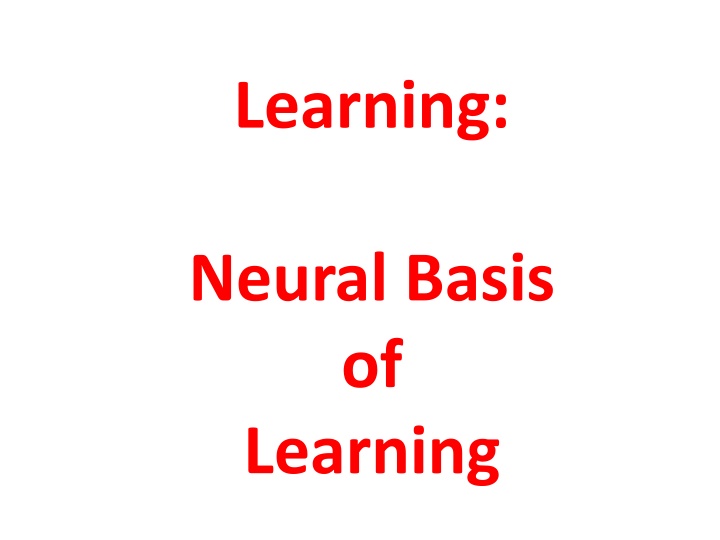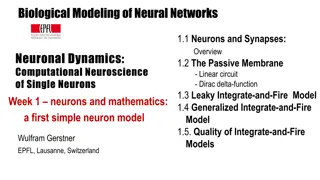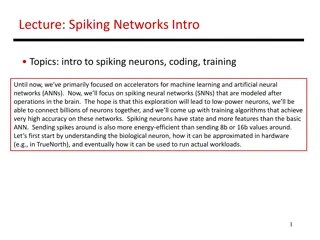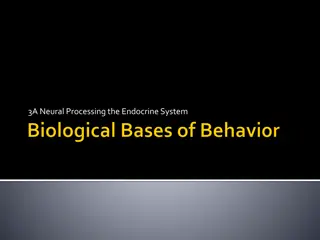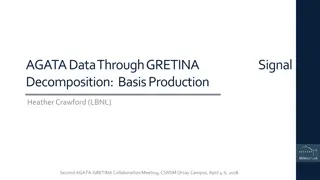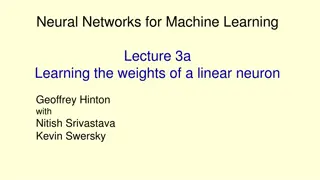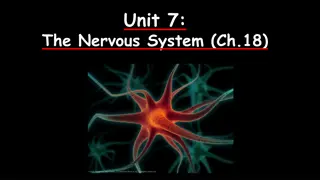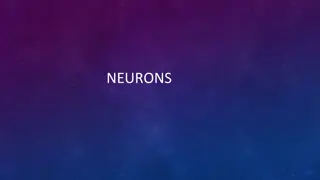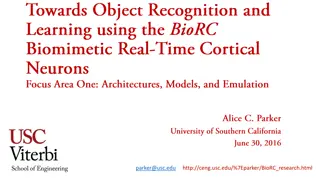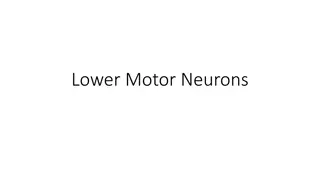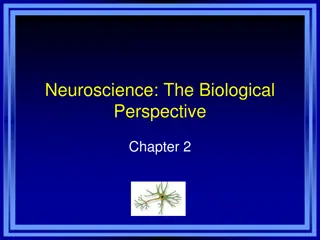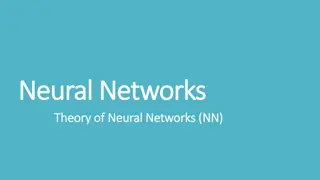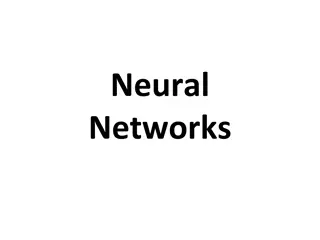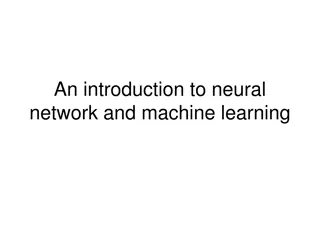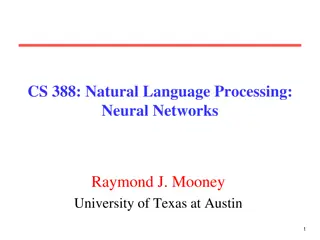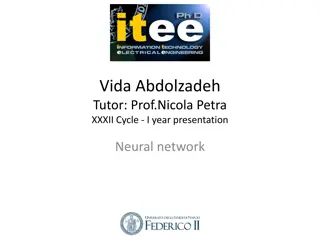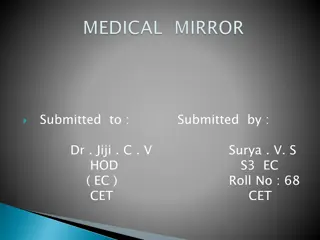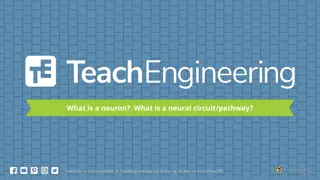Neural Basis of Learning: Mirror Neurons and Biological Constraints
This content delves into the neural basis of learning, focusing on mirror neurons and biological constraints that shape learning processes. Mirror neurons are explored in relation to observation and action, while biological constraints such as taste aversion and instrumental conditioning are discussed in the context of innate predispositions influencing learning outcomes. The involvement of specific brain areas, like the pre-motor cortex and visual cortex, is also highlighted. Explore the fascinating world of how our brains learn and adapt based on neural mechanisms and environmental factors.
Download Presentation

Please find below an Image/Link to download the presentation.
The content on the website is provided AS IS for your information and personal use only. It may not be sold, licensed, or shared on other websites without obtaining consent from the author.If you encounter any issues during the download, it is possible that the publisher has removed the file from their server.
You are allowed to download the files provided on this website for personal or commercial use, subject to the condition that they are used lawfully. All files are the property of their respective owners.
The content on the website is provided AS IS for your information and personal use only. It may not be sold, licensed, or shared on other websites without obtaining consent from the author.
E N D
Presentation Transcript
Learning: Neural Basis of Learning
http://en.wikipedia.org/wiki/Mirror_neuron Mirror Neurons Mirror Neurons - a neuron that fires both when an animal acts and when the animal observes the same action performed by another. http://en.wikipedia.org/wiki/File:Makak_neonatal_imitation.png
http://en.wikipedia.org/wiki/File:Motor_Cortex_monkey.jpg Mirror Neurons Mirror Neurons are located in the ventral pre-motor cortex of the frontal lobe. In neuro-anatomy, the prefix pre means anterior to .
http://en.wikipedia.org/wiki/File:Gray726-Brodman.svg Mirror Neurons: Brodmann s Area 6 Brodmann s Area 17 = Primary Visual Cortex V1
Mirror Neurons PubMed Abstract on Mirror Neurons: http://www.ncbi.nlm.nih.gov/pubmed/15217330 BrainFacts.org on Mirror Neurons: http://www.brainfacts.org/brain-basics/neuroanatomy/articles/2008/mirror-neurons/
http://en.wikipedia.org/wiki/Mirror_neuron Mirror Neurons Mirror Neuron Demo http://commons.wikimedia.org/wiki/File:Dynamic-Visuomotor-Transformation-Involved-with- Remote-Flying-of-a-Plane-Utilizes-the-%E2%80%98Mirror-pone.0033873.s001.ogv Critics caution that an individual neuron (even a mirror neuron) cannot be responsible for registering the intentions of others. Dr. Patricia Smith Churchland Neurophilosopher U of California, San Diego Born 1943
http://en.wikipedia.org/wiki/Taste_aversion Biological Constraints on Learning Evidence indicates that animals are not purely tabula rasa .some pairings are more easily learned than others, suggesting an innate predisposition or preparedness . Conditioned Taste Aversion A unique type of Pavlovian Conditioning Occurs after a single pairing (e.g. that generates nausea) Stimulus and illness can be separated by hours! The pairings are specific Ingested stimuli associate with nausea (not shock) Lights and sounds associate with shock (not nausea)
Biological Constraints on Learning Instrumental Conditioning exhibits biological constraints As if certain operant responses belong to certain stimuli Pigeons quickly learn to PECK a key for food or water. Pigeons don t quickly learn to PECK key to escape electric shock. Pigeons quickly learn to FLAP wings to escape electric shock Pigeons don t quickly learn to FLAP wings for food / water. These findings contradict strong tabula rasa positions
Generalizability Across Species The basic principles of classical and operant conditioning generalize across diverse animal species because All animals share a genetic ancestry And a history that starts with the Big Bang All animals share evolutionary needs (4 F s) Feeding Fleeing Fighting Reproduction
Heres an oldie but goodie Plasticity The nervous system is modifiable: Modifications in how much neurotransmitter a presynaptic neuron releases Modifications in new connections by growing new dendritic spines Modifications in neuron sensitivity to neurotransmitters
Neural Basis of Learning http://en.wikipedia.org/wiki/File:Eric_Kandel_World_Economic_Forum_2013.jpg Eric Kandel (Columbia University) earned a Nobel Prize (2000) for research on Long Term Potentiation
Long Term Potentiation Long Term Potentiation (LTP) An enduring (24 hours .to a lifetime) increase in a post- synaptic neuron s responsiveness to specific inputs, cause by repeated stimulation LTP is considered the cellular / molecular basis of learning & memory LTP Video http://www.youtube.com/watch?v=vso9jgfpI_c
Hebbs Rule Donald Hebb (1904 1985) Canadian Psychologist, McGill University Neurons that fire together, wire together
